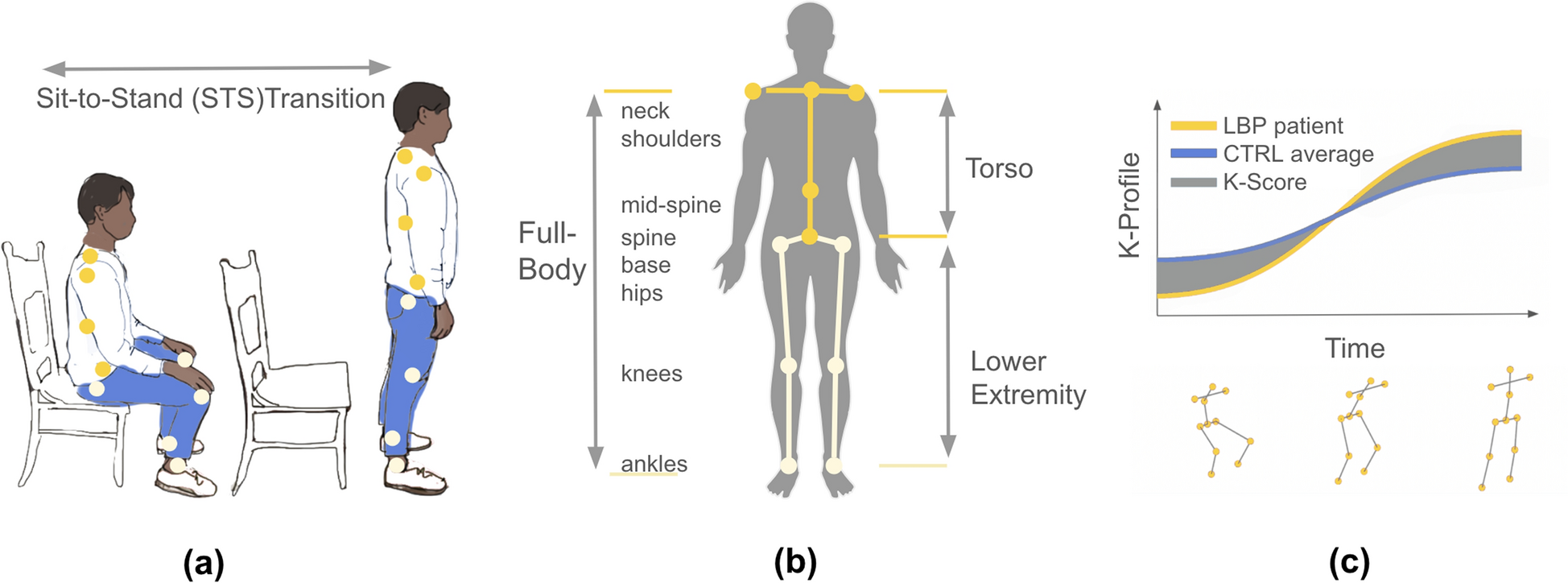2025-04-02 カリフォルニア大学バークレー校
<関連情報>
- https://news.berkeley.edu/2025/04/02/to-understand-low-back-pain-researchers-are-looking-closely-at-how-our-bodies-move/
- https://link.springer.com/article/10.1007/s00586-025-08730-2
慢性腰痛の生体力学的機能における性差と痛みの経験との関連性 Sex-based differences in biomechanical function for chronic low back pain and how it relates to pain experience
Erin Archibeck,Irina Strigo,Aaron Scheffler,Abel Torres-Espin,Karim Khattab,Pavlos Silvestros,Robert Matthew,Caitlin Regan,Paul Hodges,Conor O’Neill,Jeffrey Lotz,REACH Inverstigators,Grace O’Connell & Jeannie Bailey
European Spine Journal Published:20 March 2025
DOI:https://doi.org/10.1007/s00586-025-08730-2

Abstract
Purpose
The relationship between pain experience and biomechanical impairment in chronic low back pain (LBP) is unclear. Among the broader pain literature, sex-based differences in pain experience have been established. However, it is unknown if sex-based differences in pain experience relates to compromised movement patterns for patients with chronic LBP. This study examined sex differences and whether there are sex-based associations between pain experience and biomechanical function in patients with chronic LBP.
Methods
To capture the biomechanical variability among LBP patients, we quantified full-body movement quality based on the extent that 3D postural trajectories deviated from matched controls during a sit-to-stand task (Kinematic Composite Score, K-Score). For both males and females, the K-Score was compared to pain measures, including patient-reported metrics and quantitative sensory testing (pressure pain threshold, PPT).
Results
There were significant sex-based differences in pain experience and biomechanical function in patients with LBP. Specifically, males exhibited ~ 8% lower trunk K-Scores, indicating biomechanical function that deviated more from controls when compared to female participants (p < 0.001). However, females exhibited PPT values 29% and 41% lower than males at the control and pain sites, respectively (p < 0.0001). There was a weak but significant negative association between PPT and K-Scores for males (R2 = 0.14, p < 0.01), while females lacked an association.
Conclusion
Overall, males with LBP exhibited worse movement quality, driven by trunk motion, but higher PPTs. Possible explanations include reduced interoceptive awareness or increased kinesiophobia in males, which may influence movement patterns. This research is an initial step in uncovering the complex relationship between patient-specific factors influencing LBP disability, laying the groundwork for further exploration, and paving the way for improving outcomes with patient-specific treatments.
腰痛の世界的、地域的、国家的負担1990-2019:世界疾病負担調査2019の系統的分析 Global, regional and national burden of low back pain 1990–2019: A systematic analysis of the Global Burden of Disease study 2019
Sheng Chen, Mingjue Chen, Xiaohao Wu, Sixiong Lin, Chu Tao, Huiling Cao, Zengwu Shao, Guozhi Xiao
Journal of Orthopaedic Translation Available online: 10 September 2021
DOI:https://doi.org/10.1016/j.jot.2021.07.005

Abstract
Background
To comprehensively analyze the global level and trends of prevalence, incidence and years lived with disability (YLDs) for low back pain (LBP) from 1990 to 2019 by age, sex and sociodemographic index (SDI).
Methods
Publicly available modelled data and methods were obtained from the Global Burden of Diseases (GBD) study 2019, and used to evaluate the global burden of LBP through a systematic analysis.
Results
Globally, the age-standardized prevalence, incidence and YLDs rate of LBP were slightly decreased from 1990 to 2019, but the number of the prevalent cases, incident cases and YLDs had substantially increased, and LBP remains the leading cause of YLDs in 2019 worldwide. The number of prevalent cases was increased with age and peaked at the age of 45–54 years for both sexes, and the global prevalence rate was higher in females than in males and increased with age, peaking at the 80–84 age group in both sexes in 2019. Overall, a positive association between the age-standardized YLD rate and SDI was observed over the past thirty years. At the national revel, the United States, Denmark and Switzerland had the three highest levels of age-standardized prevalence, while Zambia, Zimbabwe and Canada showed the highest increase in the age-standardized prevalence during 1990–2019.
Conclusions
LBP is a major public health issue globally, and its burden remains high. Increasing population awareness about its risk factors and preventive measures for LBP are needed to reduce the future burden of this condition.
The translational potential of this article
Due to the high prevalence and heavy burden of LBP globally, it is important to update its epidemiological data. This systematic analysis provides researchers and healthcare policy makers with up-to-date, comprehensive and comparable information on global LBP burden, which is of clinical translational significance.
Questions answered in this article
This is generative AI content and the quality may vary. Learn more.
- How are risk factors for Low Back Pain classified in the Global Burden Of Disease study?
- How many countries provided data for assessing the prevalence of Low Back Pain in the Global Burden Of Disease study?
- How were diagnoses for Low Back Pain derived from self-reported data?
- What is the global prevalence of Low Back Pain compared to other chronic diseases?
- What recommendations are suggested for policy makers to reduce the risk of Low Back Pain?


